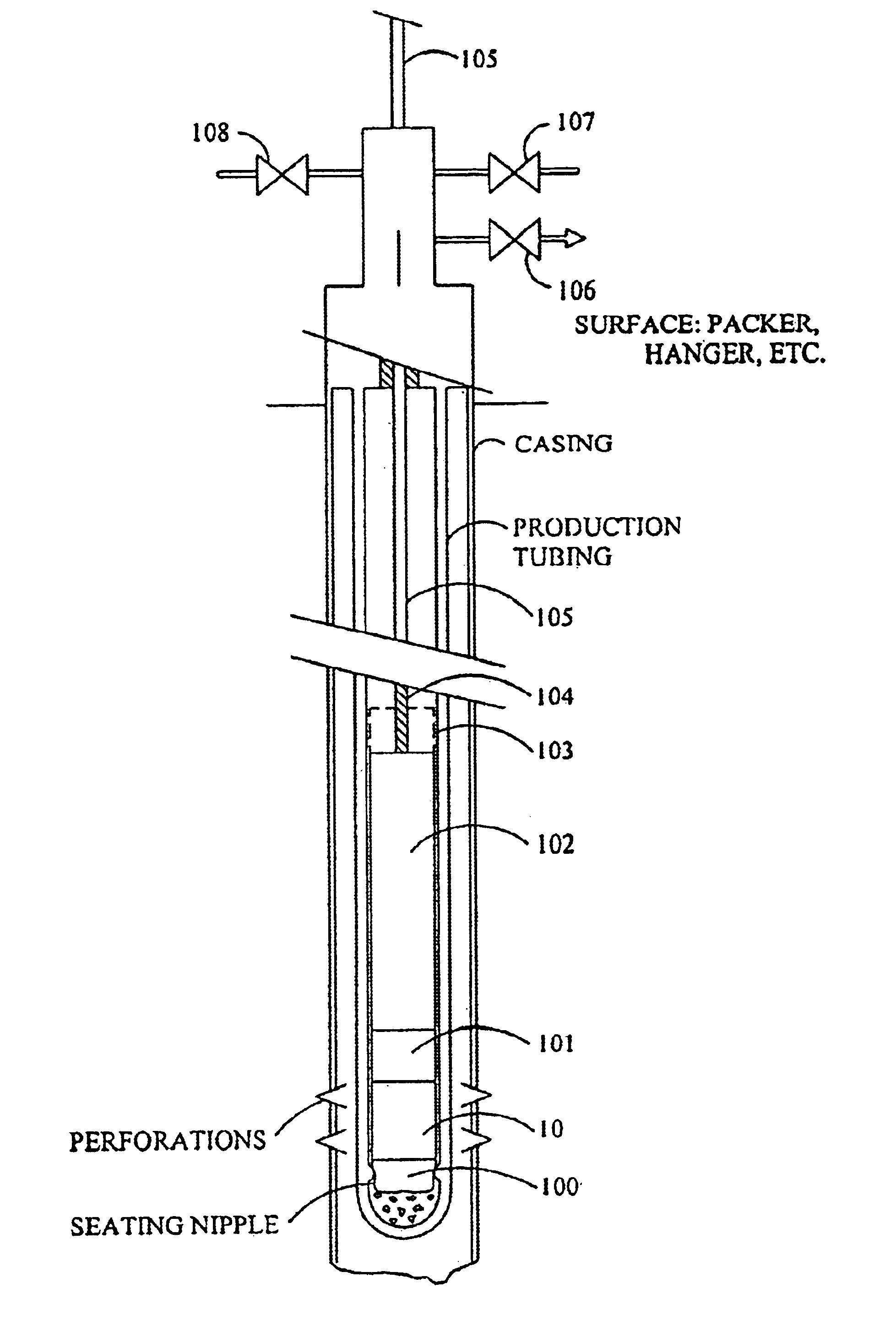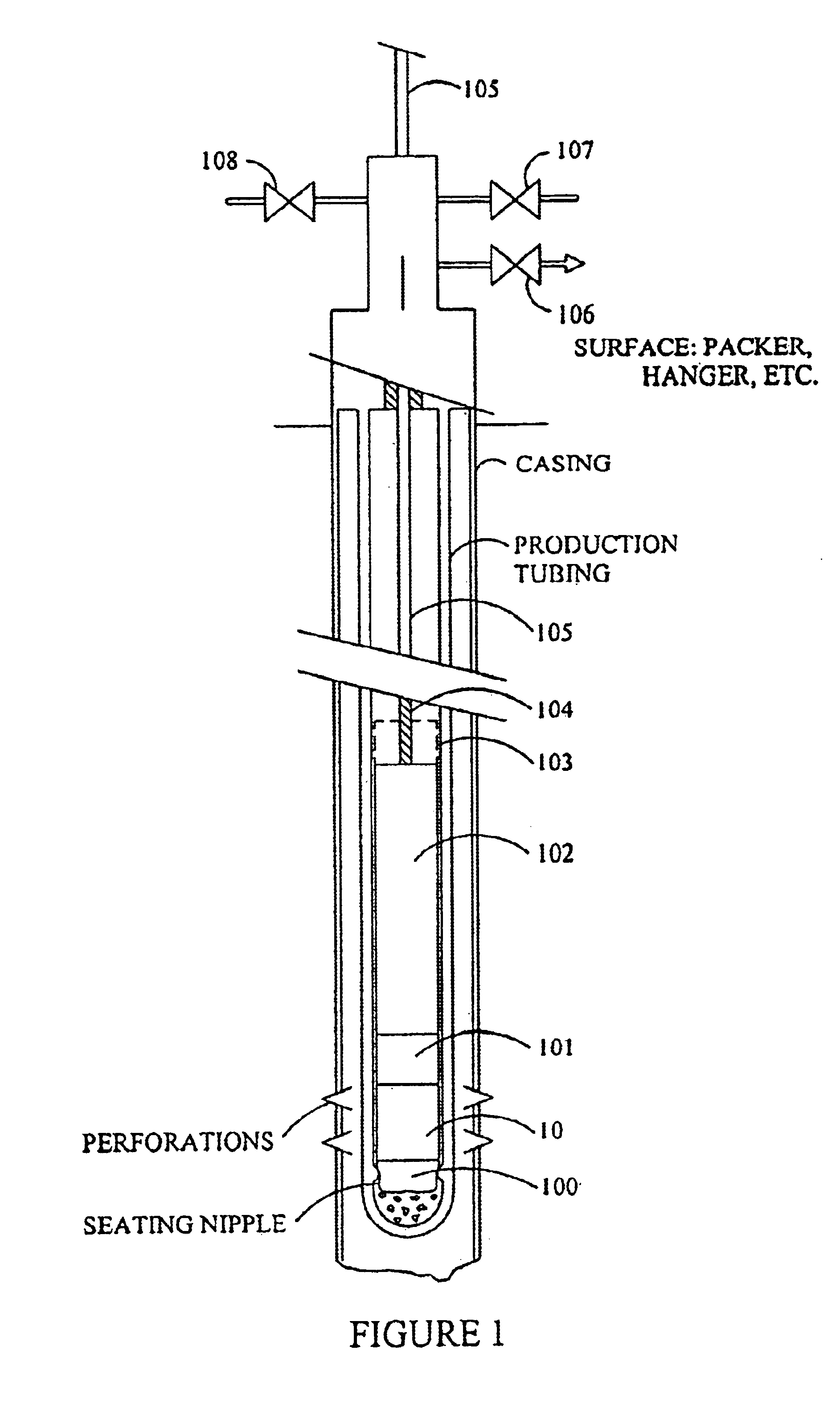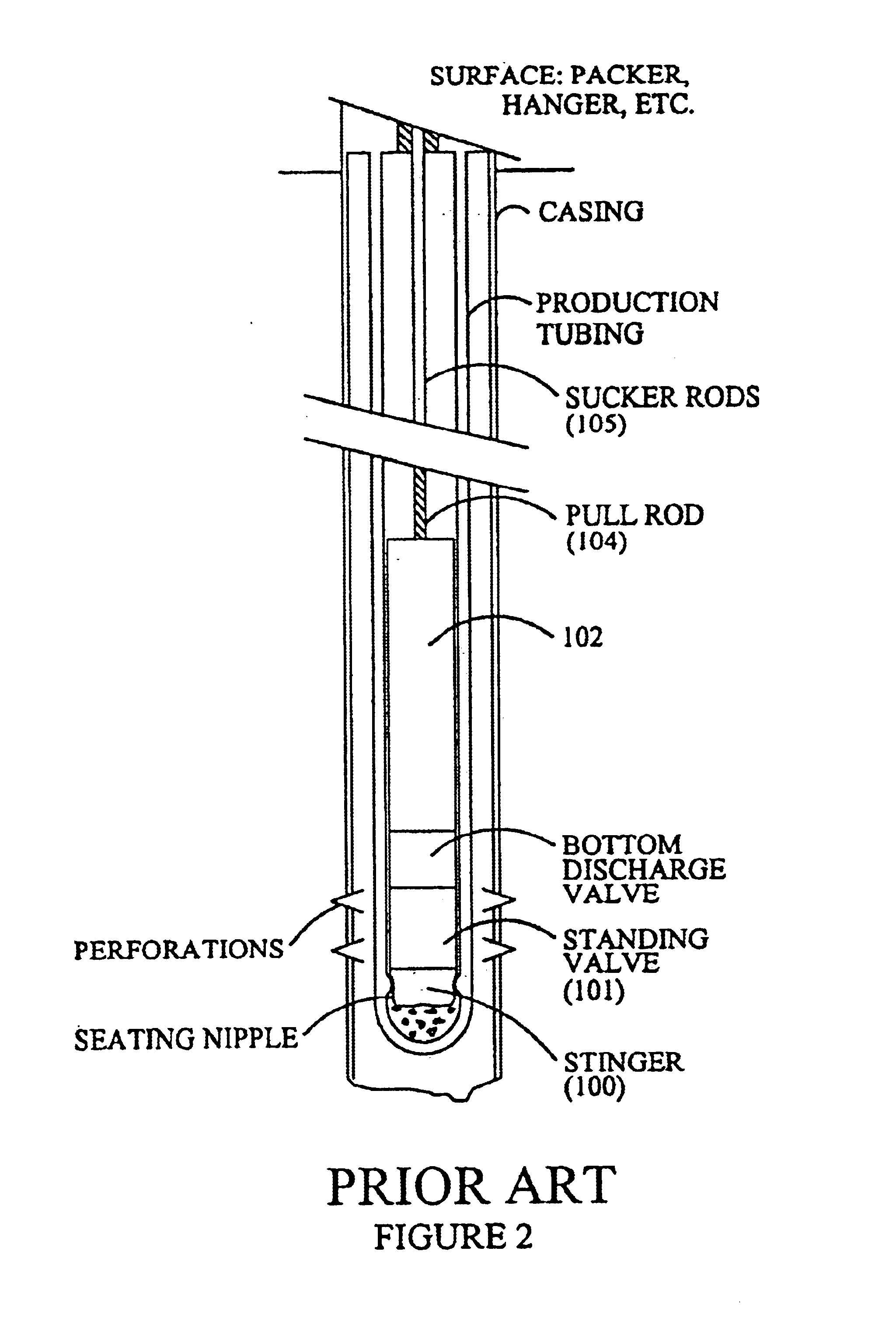Method for using a reciprocating pump vent-dump valve
- Summary
- Abstract
- Description
- Claims
- Application Information
AI Technical Summary
Benefits of technology
Problems solved by technology
Method used
Image
Examples
Embodiment Construction
The device disclosed may be used in conjunction with tubing pump method, stationary pump barrel method, traveling barrel pump method, and other pumping methods that require a standing valve. The oil industry generally defines a standing valve as a valve that causes produced fluid to “stand” in the production tubing. When used in pumping operations, the standing valve in is a check valve (usually one or more ball and seat valves) that allows for the one-way passage of produced fluid from the formation to the surface.
The tubing pump method is probably the most common method of pumping. In the past, when using the tubing pump method, and prior to beginning pumping operations, a standing valve is dropped from the surface to seat into a standard seating nipple located at the bottom of the production tubing. This standing valve provides a means to apply pressure down the tubing to check its integrity and to check the seal the ball and seat, prior to inserting the tubing pump and beginning...
PUM
 Login to View More
Login to View More Abstract
Description
Claims
Application Information
 Login to View More
Login to View More - R&D
- Intellectual Property
- Life Sciences
- Materials
- Tech Scout
- Unparalleled Data Quality
- Higher Quality Content
- 60% Fewer Hallucinations
Browse by: Latest US Patents, China's latest patents, Technical Efficacy Thesaurus, Application Domain, Technology Topic, Popular Technical Reports.
© 2025 PatSnap. All rights reserved.Legal|Privacy policy|Modern Slavery Act Transparency Statement|Sitemap|About US| Contact US: help@patsnap.com



